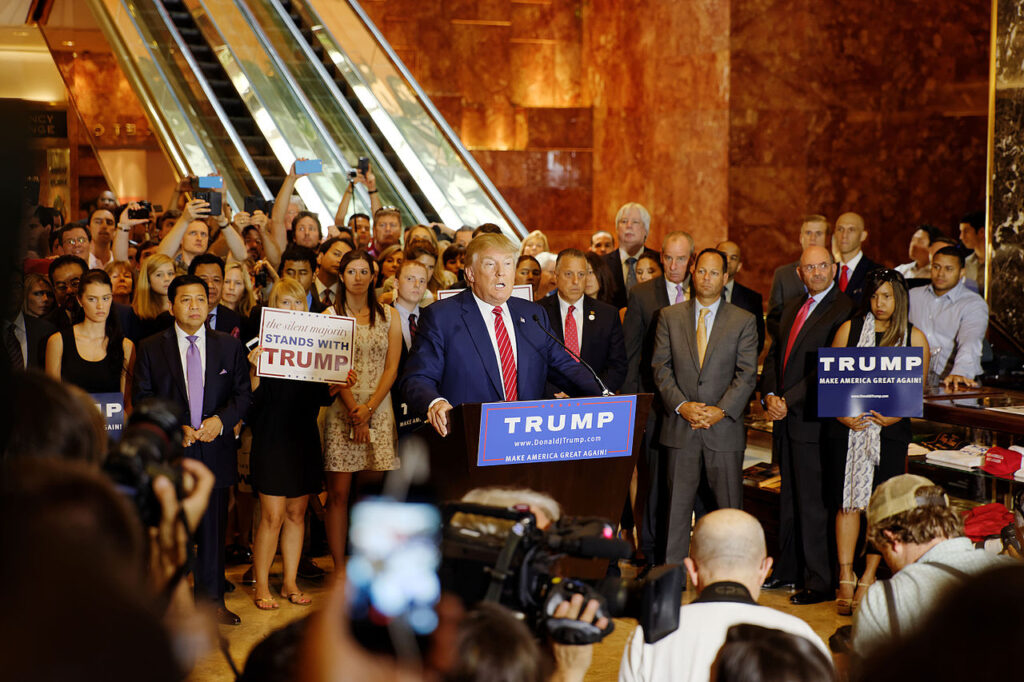
According to a 2015 Pew Research report, almost two-thirds of Millennials (61%) view news on Facebook, more than any other news source. Only 37% say they acquire news from local TV. By contrast, Baby Boomers consume news from local television at almost the same rate that Millennials get news from Facebook (60%) and Gen Xers fall in the middle, with 51% getting political news from Facebook and 46% from local TV.
A Wide Array of Political News on Social Media Keeps Millennials Engaged
Not only are Millennials more reliant on Facebook and other social media sites for political news, they also see it throughout the day at high rates, as opposed to a few times a day on a local news affiliate. Twenty-four percent of the age group said at least half the posts in their feeds were related to politics. (To be fair, it’s unclear whether all those posts are from legitimate news sources. It is possible users were counting memes of Donald Trump jack-o-lanterns, shares from The Onion, and other humorous content about politicians.)
The report goes on to show that Millennials are less aware of broadcast news sources like MSNBC and NPR, and more aware of online sources like Buzzfeed and Google News.
Where Does This Leave Local Television for the 2016 Election Cycle?
Is this cause for concern for TV stations that rely heavily on political ad spending in election years? Not necessarily. In April, Carl Salas of Moody’s told The Los Angeles Times he predicts 2016 will see a 20% increase in spending over the 2014 mid-term election spending of $2.9 billion. He added that he thought about two-thirds of that money would go to television.
Other political ad spending analysts agree. In July, The Cook Political Report predicated total TV ad spending for 2016 would hit $4.4 billion.
That’s not just going to national networks, either—a July Washington Post article pointed out that older viewers are more likely to vote. Research firm BIA/Kelsey’s senior vice president Mark Fratrik is quoted as saying that local news viewers tend to be voters—all the more reason for political spenders to buy time on both local and national TV.
Should TV Stations Focus on Older Viewers?
Since Gen Xers and especially Baby Boomers are more likely to both watch local news and get political news from television, it might appear that the simple solution is to focus on older viewers when planning political coverage for the 2016 year.
This strategy isn’t difficult to implement. While you should cover all the issues of both local and national news, you can also run special reports on issues that are primarily of interest to older viewers—a package detailing where candidates stand on Social Security, for example.
That doesn’t mean you should abandon hope of reaching Millennials. They may be less likely to vote, but the 18-34 age demographic is still important to advertisers, as they’re less brand loyal and more likely to try new products. And since they’re more active on social media in terms of their news consumption, broadcast journalists are increasingly using social media itself to measure the impact of their reports.
How to Reach Millennials with Political News
Facebook and other social networks are the ideal places to reach Millennial news consumers. If you can engage with younger viewers on social media, they’re more likely to watch your station when they do turn on the TV for news. And try experimenting with newer streaming video social media networks like Meerkat and Periscope which can add an extra dimension to a news story, allowing journalists to provide behind-the-scenes commentary that wouldn’t fit on TV. You can also earn ad revenue from pre-roll ads when people view videos of political news online, and even more revenue if they visit your website.
While political issues that affect older Americans may be a good idea for special reports, your social media posts should focus on issues of interest to younger consumers, like unemployment rates and student loan debts. Did a political candidate just announce he or she has a plan to reduce higher education costs? Get the package from your national network and retweet it, asking followers what they think. This kind of engagement will help you earn ad revenue online thanks to younger viewers, while still collecting on-air ad dollars for the 2016 election cycle.
Institutions like NYFA’s Broadcast Journalism program are training the next generation of multimedia journalists (MMJs). Students learn how to become content creators, with an eye towards cross-platform distribution. Usually a local news story shouldn’t be posted “as is” on social media. Instead, it needs to be crafted to meet the expectations and needs of a different audience. One reason why so-called “explainers” have become popular is that they can be viewed on a smartphone or a similar device minus any sound. That’s exactly what Now This did recently with a powerful Halloween-themed story.